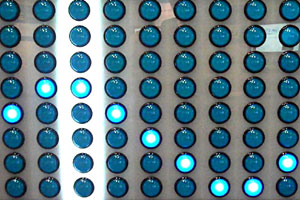Hard economic times and changing social trends have some museums undergoing a 21st century re-design. The focus is on creating more visitor-centered exhibits using new media tools and more input from the public. Some technology and history museums in the Bay Area are helping to lead the way, as you will hear in our radio piece.
When the public is invited in to help design exhibits, it can create faster turnover and more affordable exhibits. The Tech Museum in San Jose, for example, held a competition in Second Life. The public was asked to design exhibits on the theme of art, music and film. Entries came from as far away as England and China. Winners were awarded five thousand dollars each and asked to translate their designs into a real life gallery space. That exhibit is now on display at the Tech. According to the Tech's Director, Peter Friess, the exhibit could have taken three years to design. Instead, it took six months. Museum directors are hoping that asking the public to help generate, share and update content will also create more loyalty and drive up ticket sales.
Some people cringe at the idea of asking the public to design museum exhibits. They point to the unlimited number of cat videos on You Tube and ask, "is this really what we want to do to museums?" The museum directors I spoke with say that there is still a role for the curator in this new model, but as more of an educated facilitator than an autocratic, removed taste-setter. Nina Simon, a participatory exhibit designer who writes a blog called Museum 2.0 thinks about this question a lot and has some interesting ideas.
While the participatory, hands-on movement has been around for awhile, these museums are picking up on a cultural shift - and it's not just Bay Area history and technology museums. The Smithsonian American Art Museum was the first to offer an alternate-reality game. The director of the Walters Art Museum in Baltimore thinks the mission of museums may be expanding to include social services. The Brooklyn Museum created a temporary exhibit, "Click," using crowd sourcing and the Museum of Minnesota created a permanent exhibition based on nominations from the public. I wonder what Web 3.0 will bring?

